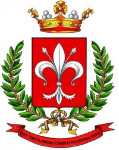Oratorio dei SS.Filippo e Giacomo
Ultimo aggiornamento: 18 ottobre 2023, 13:12
Oratorio dei Santi Filippo e Giacomo
L'antico sacello (recinto con altare) fu innalzato nel secolo VIII dal Vescovo Agnello, per poi diventare una struttura più grande sulla quale fu edificata la soprastante chiesa.
La porta d’ingresso è caratterizzata da una serie di archetti concentrici e sovrapposti, con decoro a foglia. Una cornice continua corre lungo tutto il prospetto, collegando assieme il portale e le due strette finestre laterali.
Al di sopra dell’arco, facendo con esso un corpo unico, è impostata l’abside, la cui parte aggettante realizza un arco ellittico, dettaglio che rende l’opera un mirabile esempio di architettura romanica.
L’abside è decorata alla base con protomi rappresentanti volti umani, e sulla sommità con archetti pensili.
Internamente l’oratorio è una stanza a pianta quadrata (circa 9.5m di lato) con al centro due colonne che sorreggono la volta a crociera, mentre i pilastri presenti ai quattro lati furono inseriti nel XIX secolo per sostenere l'erigenda cupola della chiesa sovrastante.
Al di sopra dell’arco, facendo con esso un corpo unico, è impostata l’abside, la cui parte aggettante realizza un arco ellittico, dettaglio che rende l’opera un mirabile esempio di architettura romanica.
L’abside è decorata alla base con protomi rappresentanti volti umani, e sulla sommità con archetti pensili.
Internamente l’oratorio è una stanza a pianta quadrata (circa 9.5m di lato) con al centro due colonne che sorreggono la volta a crociera, mentre i pilastri presenti ai quattro lati furono inseriti nel XIX secolo per sostenere l'erigenda cupola della chiesa sovrastante.
Sulla parete di fondo sono presenti vari affreschi: i Santi Filippo e Giacomo, la Madonna con in grembo Gesù Bambino, la Trinità con il Padre che sostiene il Figlio sulla Croce, San Martino nell’atto di tagliare il suo mantello con la spada per donarlo ai bisognosi.
La pavimentazione è in alcuni punti in mattoni in cotto, in altri in battuto di calce (cocciopesto).
ENG The ancient sacellum (enclosure with altar) was raised in the 8th century by Bishop Agnello to later become a larger structure on which the church above was built.
The entrance door is noteworthy for its sequence of concentric arches, superimposed in an increasingly protruding manner, with a leaf decoration. A continuous frame runs along the façade, connecting the portal and the two narrow side windows together.
The arch and above the apse are combined as a single body: the projecting part creates an elliptical shape, a detail that makes this stonework an admirable example of Romanesque architecture.
The apse is decorated at the base with protomes representing human faces, and at the top with hanging arches.
Internally, the oratory is a square room (its sides are about 9.5m) with two columns in the center that support the cross vault, while the pillars on the four sides were inserted in the 19th century to support the dome of the upper Church of San Valentino.
The arch and above the apse are combined as a single body: the projecting part creates an elliptical shape, a detail that makes this stonework an admirable example of Romanesque architecture.
The apse is decorated at the base with protomes representing human faces, and at the top with hanging arches.
Internally, the oratory is a square room (its sides are about 9.5m) with two columns in the center that support the cross vault, while the pillars on the four sides were inserted in the 19th century to support the dome of the upper Church of San Valentino.
On the back wall there are various frescoes: Saints Philip and James, Virgin Mary with Jesus as a child on her lap, the Trinity with the Father supporting the Son through the Cross, Saint Martin in the act of cutting his cloak with a sword to give it to the needy.
The flooring is in some places consists of handmade terracotta bricks, in others is made with cocciopesto (beaten lime mixed with fired clay).
